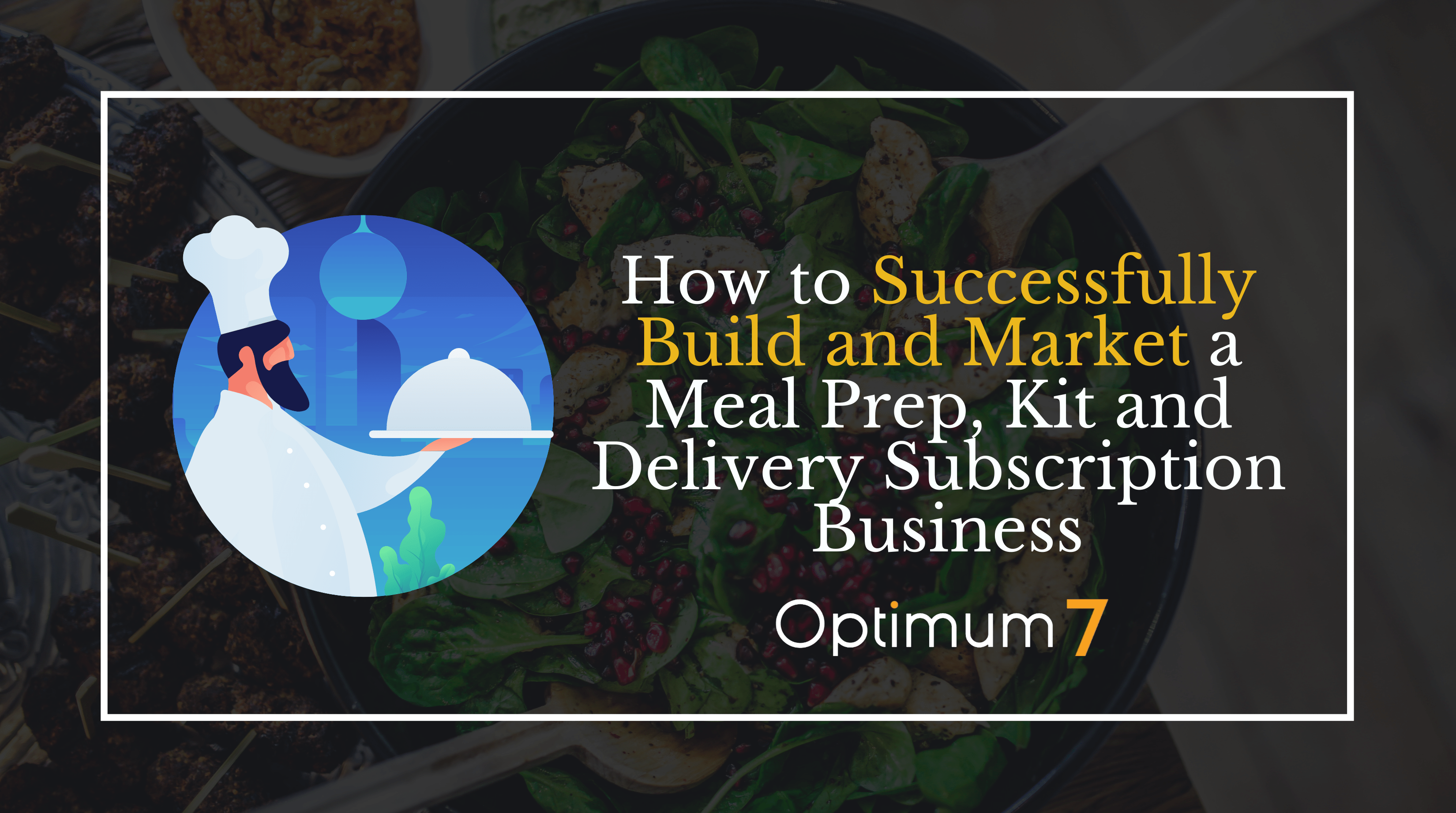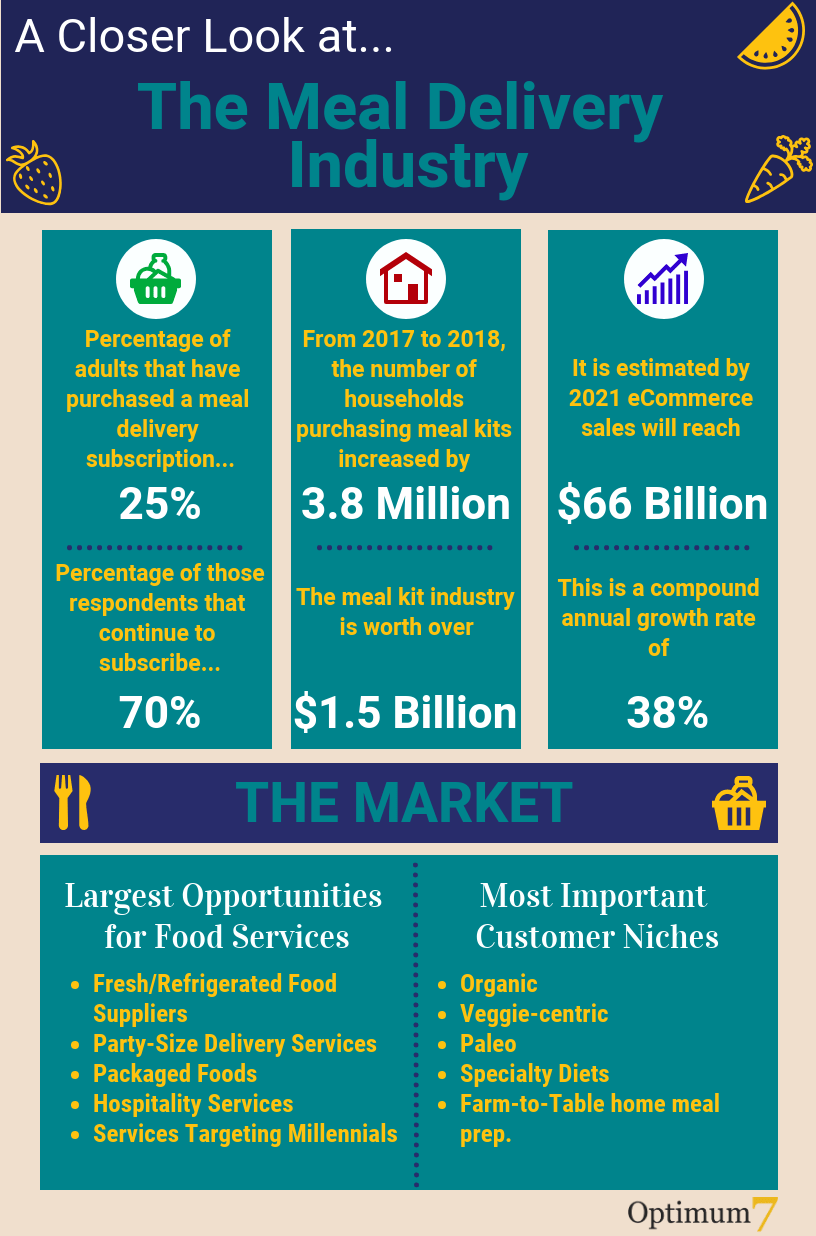The Power Of A Healthy Meal
When you sell a ready-made meal, a meal delivery kit or a meal prep subscription, you are selling convenience. You save someone the time of going out to eat, introduce someone to the joys of home cooking, or to rapidly look up a recipe that will satisfy their kids. Also, you are ideally giving them a cooking and dining experience they can’t get anywhere else.
Also, you love to cook, but you are avoiding the stress of the modern restaurant or kitchen. Why submit yourself to the lowly commis chef life when you can be an executive chef instead, and own your business to boot? Delivering your own meals means that you control the recipes, and every step of the process. And you save on the costs of renting retail space with a kitchen.
You are doing these consumers a service by reducing their cooking time and giving them an incentive to try healthy alternatives. Good food is therapeutic and can melt away daily stresses.
When you deliver meals or meal prep, you provide more than caloric intake. You are providing an experience, that will brighten someone’s day or night. They will remember that. And that is why you must market well.
Market Overview: Meal Kit Delivery Systems
The meal kit delivery market started in the United States in 2012 and in Europe in 2007. By 2025, Hexa Research estimates that the global meal kit industry will hit $9.84 billion USD while the American market will reach $4.0 billion USD. It is growing at a rapid rate, and North America is estimated to be the highest meal kit country consumer. Hello Fresh currently owns 33 percent of the market.
People seem to prefer fresh food and gluten-free options the most in the meal kit market. Companies that provide gluten-free such as Blue Apron and Green Chef are luring in more customers.
Competing Against Established Giants
Critics call meal kits a “fad” that won’t last. Whether or not this is true, perception for investors matters when you want them to buy stock in your company. The right or wrong words in the news can also affect consumers’ perceptions of your product. Currently, there are market fluctuations.
Amazon has proven itself a formidable competitor to the meal kit industry with its expansive grocery business. The company has not invested in meal kits, but it provides alternatives. After purchasing Whole Foods, Amazon has reduced prices at the grocery retail for prime members and enabled delivery to consumers’ doorsteps. The corporation is using its supply chain and distribution power to increase convenience. You need to anticipate if Amazon will cut into your business.
Other corporations and businesses have taken steps to capture the market share. We have seen the homey Blue Apron ads on YouTube and television, but we also have DeliverLean, Sun Basket, Home Chef, Gobble, Hello Fresh, and dozens more.
Does this mean you throw the towel and strip off your apron? Far from it; chefs survive by being tougher than the meat they have to tenderize. You are tougher than your competitors, and you can survive. Blue Apron may have a first-mover advantage, but you can learn about their deficiencies and fill those niches.
The Products You Can Sell
As we have said, you are selling time to people, and convenience. You feed consumers who lack the time to prepare a meal, either because of long workdays or because of busy lives. They love your cooking or recipes, and you love feeding them. In addition, you can provide calorie counts and an ingredient list so that consumers know everything that goes on their plate.
You do not have to limit yourself to just cooking; we list several options below about what you can do for meal delivery or prep work:
Ready-Made Meals
If you want to get fancy, and you love cooking for strangers, you can sell these. Ready-made meals are exactly what they sound like; you deliver hot or cold food to order, on a regular basis. Some can be frozen and then popped into the microwave.
Obviously, the drawback of ready-made meals lies in the risk of perishable products, having fresh ingredients and consistent dishes. If you are selling frozen dishes, you need to make sure that they are stored without risk of thawing, otherwise, you will have e.coli frozen food.
Meal Kits
Meal kits are boxes of prepared ingredients that allow consumers to cook their lunches or dinners with the right proportions. This saves on prep time, while also providing recipes on the concoctions that people can craft.
We do have the freshness risk, as we do with ready-made meals. You need to make sure these ingredients are stored well. No one likes food waste or for your ingredients to end up in the trash.
Subscription Boxes
These are the expanded version of ready-made meals and meal plans. You should have subscriptions on hand if you want to have loyal customers who will buy in the long-term. Many meal delivery companies use this strategy to turn a profit.
The main risk with this is creativity; unless you specify otherwise, you have to deliver something new with each subscription box, which means new recipes and ingredient options. Creativity is a commodity, especially with food. Subscription boxes also mean maintaining customer loyalty on a regular basis.
How to Market Meal Delivery and Prep
You have the stamina to survive the meal delivery system, and you have your products. Now you need one last crucial aspect: customers. Otherwise, you will be running at a loss. And lots of good ingredients or meals will linger in your refrigerators.
How do you compete with the other established brands, especially those with larger budgets to spend on promotion? Marketing is key and proving to consumers that you can deliver convenience and health to them.
Identify your Target Market and Niche
Since you have about a dozen competitors, and more as the number of passionate chefs channel their skills into meal delivery or meal kit delivery services, you need to know your market. Because of the time and labor put into meal delivery, you will have to put relatively high prices, unless you find ways to economize.
Know serving sizes as well, especially when delivering perishable products. Smaller servings mean fewer ingredients and less perishable ingredients, so you need to be economical in determining a cost per unit as well as storage. If your target audience is people who live alone, you want to sell smaller portions. For families, prepare three to four serving sizes at minimum and offer discounts on bulk if you can manage it.
Accommodating special diets is one way to find your niche. You can provide freshly-made gluten-free foods or ingredients that won’t trigger a celiac reaction. Or you can deliver frozen foods low in refined sugar.
Build Trust Over Time
When a person chooses to buy food, they are trusting you to sell them good products that will keep them healthy. That means your products have to be good quality, you need to provide accurate calorie counts, and live up to any written statements or branding.
Seek out feedback from your hungry customers. Listen to them when they talk about what could be done better. Record all or any complaints, and strive to constantly improve. Mistakes will happen, and consumers will appreciate you when you address those mistakes and fix them immediately.
Make Your Website Navigable And Mobile-Friendly
One way you can have a competitive advantage is by increasing online convenience for consumers. If your consumer can find you and your services online, as well as the information they need to make a purchasing decision, then they will appreciate that. They also will appreciate if they can search for your website on a smartphone, and explore it accordingly.
Develop an information hierarchy to educate new consumers, and to provide new options to existing ones. Make sure to have a contact page, and ensure that signing up for a one-time order or subscription is easy. Test your website functions regularly and pay your hosting service.
Maximize Your SEO
SEO, or search-engine optimization, is about ranking higher in Google search results for certain terms. You cannot pay Google to rank you higher; those would be paid-per-click ads. SEO is organic, and it’s based on the content you provide.
To maximize SEO, you need to incorporate keywords at a certain amount on the pages you want to rank. Do not go overboard, however, because Google will identify any “keyword stuffing”.
How Optimum7 Can Help
Optimum7 always keeps on top of products and providing marketing for businesses that deliver value. We have twelve years of experience with promotion, content creation, and SEO techniques.
Reach out to us today, so we can help you with meal delivery. We know how to help you reach hungry consumers, so you can feed them. Let’s get cooking!
FAQ – How to Market Meal Kit Delivery Subscription
How many people subscribe to meal kits?
The meal kit delivery services are a booming industry in America. 17% of Americans have subscribed to one, and 90 percent refer others who do so as well! A recent Money-Blue Consult survey found out that 26% (21 million) Generation Xers and 29%, or millennials also used such service last year alone – this is huge growth over just 5 years ago when only 9%.
Can you make money meal prepping?
A Meal Prep Delivery Business has the potential to be very profitable. With margins higher than those of restaurants, you can make an ample living with lower monthly sales and spend more time enjoying life doing what really matters!
How many meal kit delivery services are there?
The meal-kit industry is booming in America, with over 150 companies and an estimated USD$2 billion worldwide. There are only a few major players that can hold their own compared to how big this business opportunity could potentially get!






